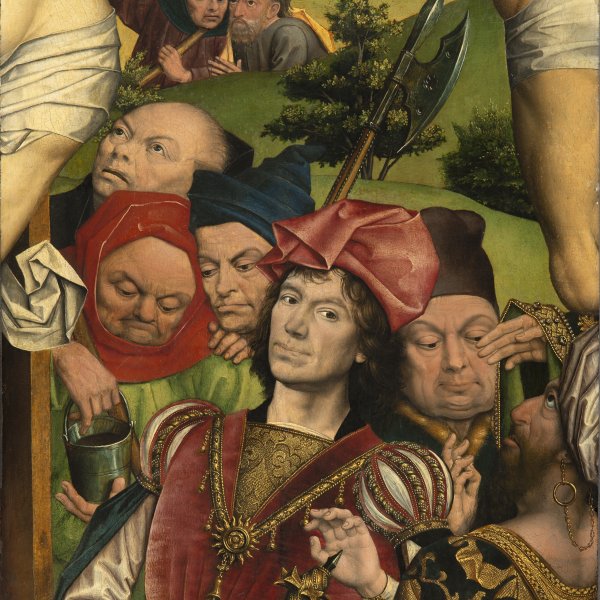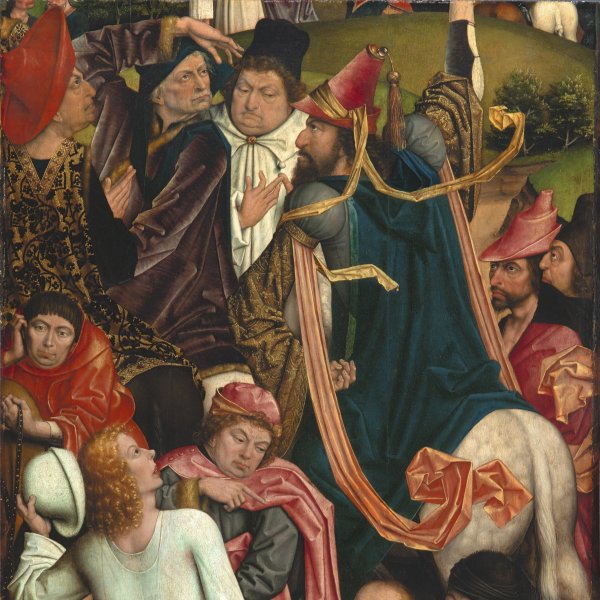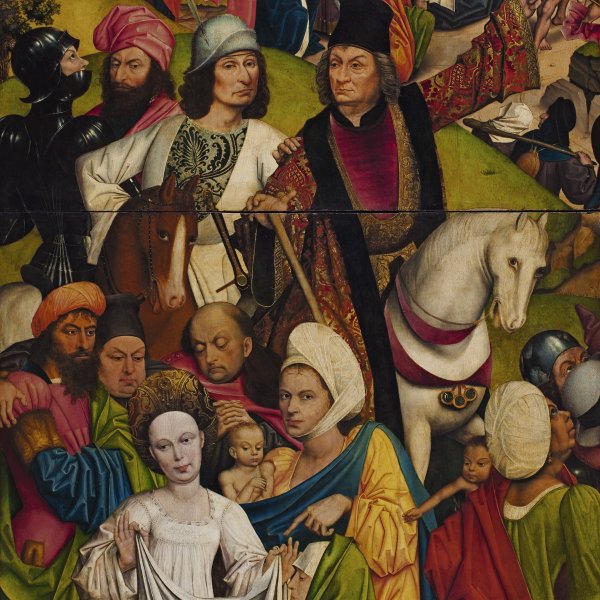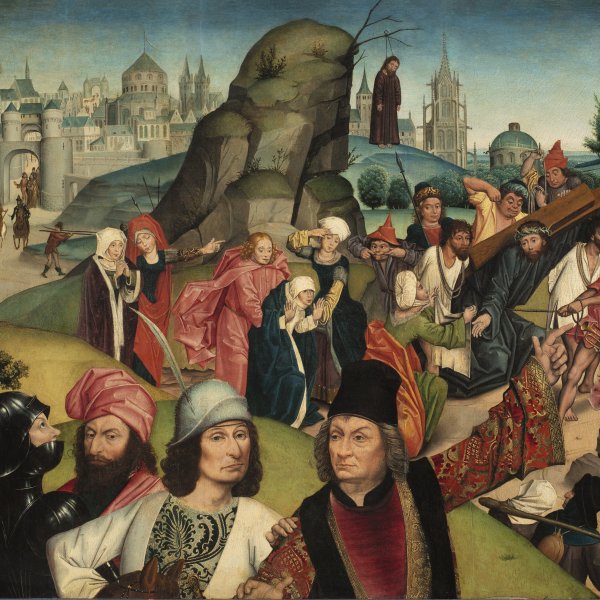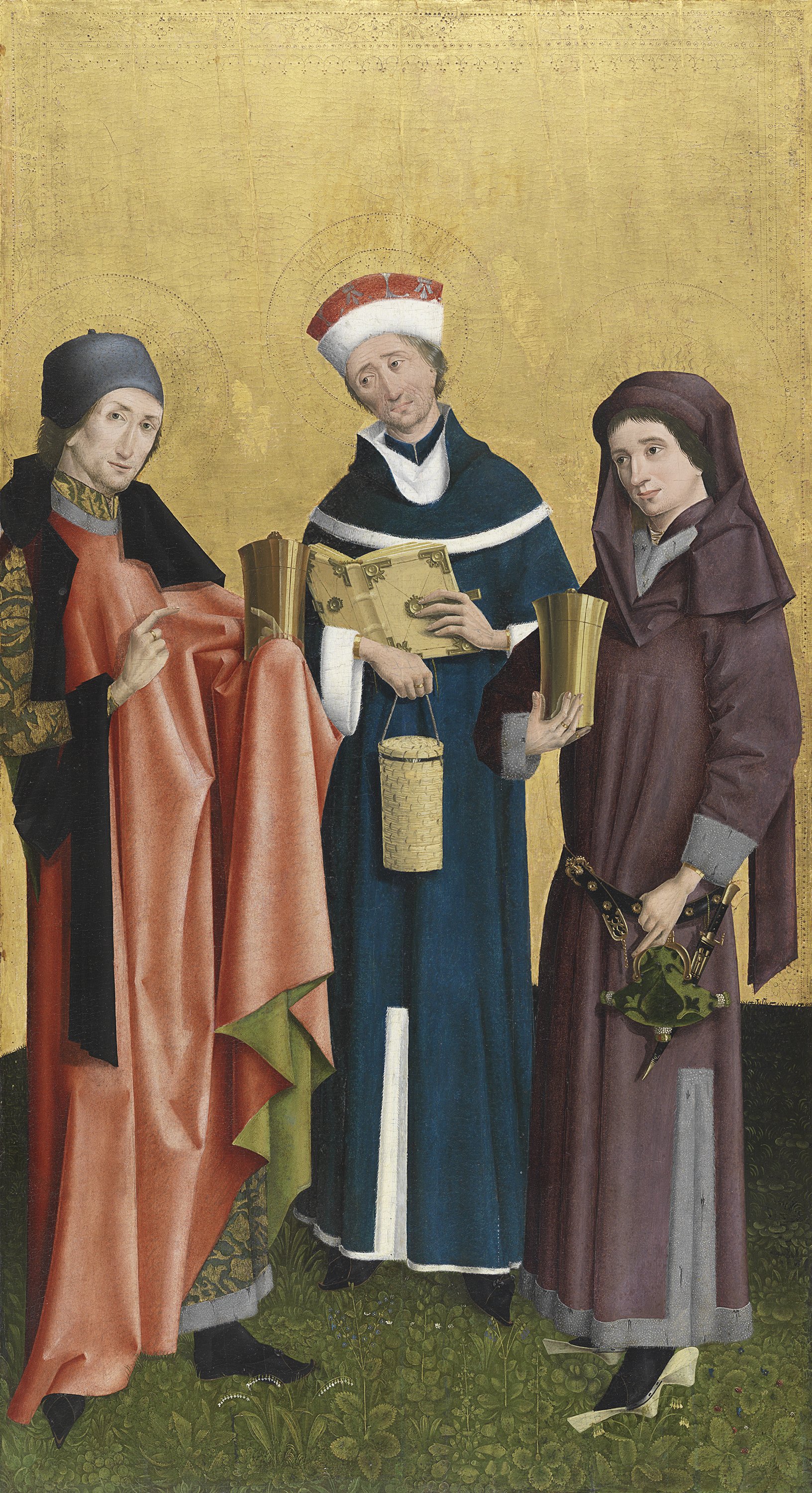Saints Cosmas, Damian and Pantaleon
The Master of the Vision of Saint John was an artist active in Cologne in the second half of the 15th century. His style combines the influence of Netherlandish painting with that of the school of Cologne, evident in the hard, linear style of the figures and the bold colours that recall the work of Stefan Lochner. The present work represents three martyr saints: Cosmas, Damian and Pantaleon, depicted with individualised faces and positioned in a semi-circle. Their clothing is painted with a wide and rich chromatic range, while the artist has also undertaken an interesting study on the reflection of light on the metal containers held by two of the saints. Saints Cosmas and Damian, located in the centre and on the left, respectively, were twin brothers who were famed for their healing skills. Saint Pantaleon, on the right, was also a doctor, but from a different period. These three martyr saints are associated with the city of Cologne.
NR
The present panel, which was recorded in earlier catalogues of the Collection as a work by an anonymous artist active in Cologne, was attributed to the Master of the Vision of Saint John by Stange. Otto Fischer associated the present painting with an Adoration of the Magi in the Toledo Museum of Art, Ohio, which would have formed part of the same ensemble as this panel. The similarities between the two panels are evident in the physical types of the figures, the treatment of the gold, the designs on the brocade and the haloes, as well as other details relating to the way the figures are constructed. Lübbeke suggested two further panels as belonging to this group: an Archangel Gabriel and a Virgin Mary, which together formed an Annunciationthat was in the Deutsches Museum until 1945.
The three saints are arranged in a semicircle against a gold background. The faces of the three martyrs are completely individualised and the artist emphasised a rich and elegantly combined chromatic range in the clothing, making full use of an interplay of colours, tones and textures. Saint Damian and Saint Pantaleon hold metal pots in their hands, visually exploited by the artist to depict the reflections of their fingers on the surface. The present panel was in the Wallraf collection in Cologne where it was exhibited until 1924. It entered the Thyssen-Bornemisza collection having been acquired on the Swiss art market in 1934.
Mar Borobia





